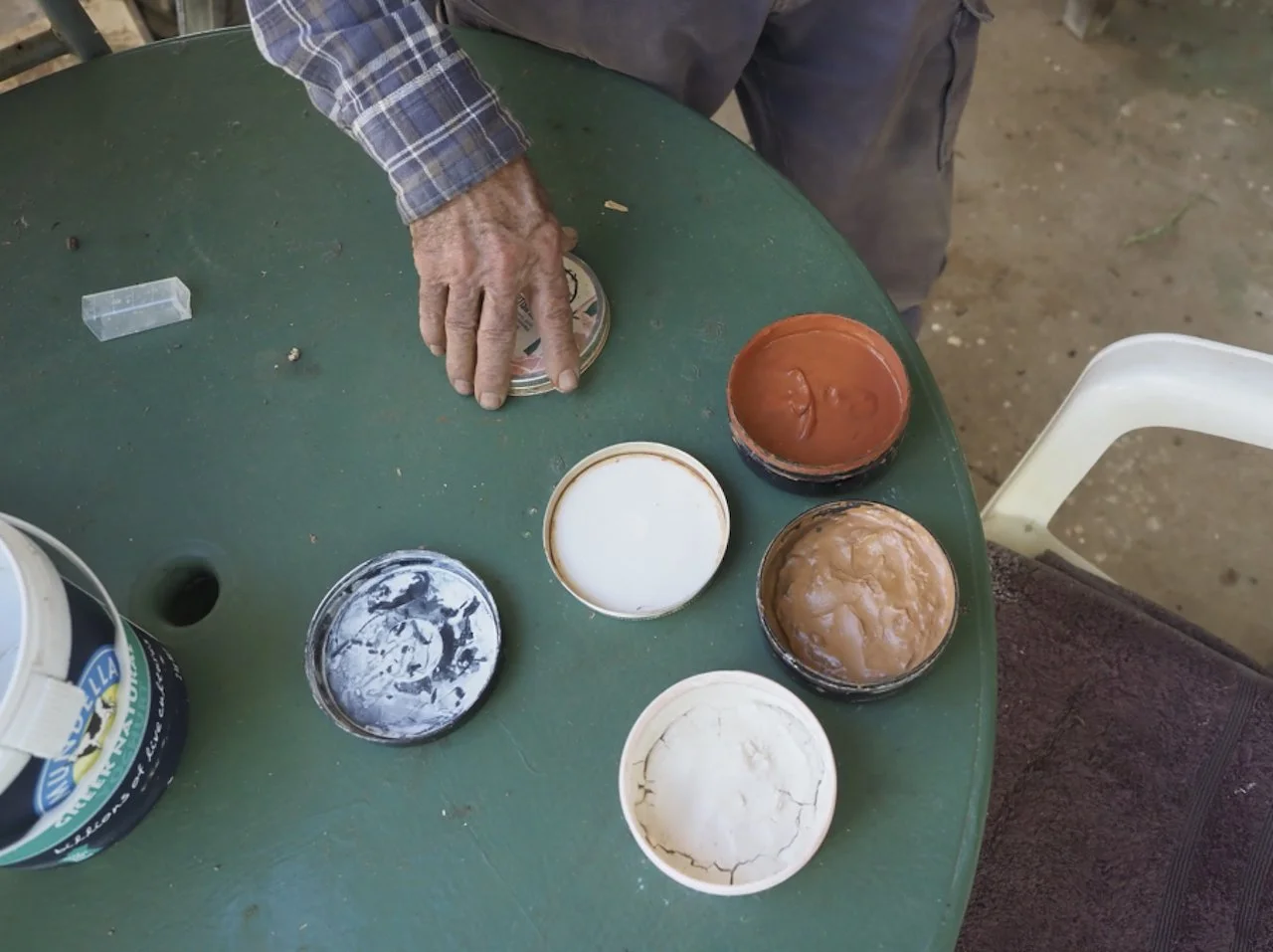Circular Economies Residency: HONF in Narrogin #1
House of Natural Fiber’s (HONF) M.Haryo Hutomo and Irene Agrivina are currently working with the community of Narrogin and hosted by Arts Narrogin. This residency forms part of one of SPACED’s current programs, Circular Economies.
During the first fortnight, our artists have been getting to know the vibrant creative community in Narrogin and share their first reflection:
A Colourful Journey: Celebrating Culture, Creativity, and Community in Narrogin
After a long journey from Yogyakarta, we arrived early in the morning to Perth. We enjoyed a lovely breakfast with Elizabeth and Miranda from SPACED, then took a direct bus to Narrogin. Anna, who runs the artist residency, greeted us at the bus stop and took us to our unique accommodation—a cozy, charming lodge within a heritage rail station. Anna explained that while the train no longer runs, the station has been transformed into an educational heritage site where people can learn about the local history of transportation. After exploring we settled in for some much-needed rest.
The next day, we participated in NAIDOC celebrations. NAIDOC stands for National Aborigines and Islanders Day Observance Committee and the week involves meaningful celebration of history, culture, and achievements of Aboriginal and Torres Strait Islander peoples in Australia. We tasted traditional kangaroo soup and connected with the local community. Later, we visited Arts Narrogin for the first time, where we met with the arts committee and local art communities. This was followed by tours of several local artists' studios. The vibrant cultural scene in Narrogin made a strong impression on us.
Over the weekend, we attended a powerful film screening titled Genocide in the Wildflower State, hosted by the Yokai Community. The movie poignantly explores the history of Indigenous people and colonialism in Western Australia.
Throughout the week, Haryo worked closely with Cheryl and Ned, researching natural pigments in the Narrogin area. Along the way, we met some fascinating individuals who shared their enthusiasm for culture, nature, colours, and pigments. We shared our plan with the Arts Narrogin committee and other artists, who responded with enthusiasm and a commitment to bringing it to life. Together with Ned and Cheryl, we also explored possible venues and settings for the project.
Toward the end of the week, we were invited to a cultural night event at Arts Narrogin, which included a community report and general meeting of arts community members and board members, followed by a music performance. We had the opportunity to introduce ourselves and present our project and a wide range of attendees visited our studios, many of whom were eager to engage with our work, offering valuable insights, expressing interest in joining us, or following the project as it unfolds. Their curiosity and enthusiasm underscored the community’s genuine interest in the themes we’re exploring, particularly the intersections of art, culture, and environmental awareness.
Inspired by the colours we saw at the NAIDOC celebrations and other local artwork; we decided to pursue research into natural pigments. We began with a concept based on a theme common in many Indigenous traditions: the five elements—Earth, Water, Fire, Air, and Spirit. The first four elements symbolise life’s essential forces, with Spirit, the Fifth Element, as the essence that connects all beings and bridges the physical and metaphysical realms. Our project, The Fifth Element: Essence of Spirit, seeks to capture this unity and interconnectedness through artistic research using natural materials and colours to reflect the bonds between humans, nature, and spirit. We will explore the intersection of art, science, and technology and celebrate the fifth element—Spirit—through a richly layered experience.
Our project aims to blend artistic expression with the scientific principles of ecological harmony, human perception, and cultural depth. Through Essence of Spirit, the artwork will invite viewers to feel connected to the environment and the shared energy of all life, emphasising the strength of cultural stories. Our interdisciplinary approach strives to deepen the understanding of cultural narratives, ecological awareness, and innovative art practices. The result will be both a physical installation embodying Spirit, and a broader dialogue with the community of Narrogin (through a series of events), in recognition the interdependence of nature, culture, and technology. Our ultimate goal is to inspire both participants and audiences to reflect on their relationships with the environment and the spiritual significance of those connections.
Being part of the SPACED: Circular Economies program has provided us with a meaningful platform to connect with the people of Narrogin and to bring forward a dialogue around sustainable practices and cultural storytelling. We are genuinely looking forward to the coming weeks and further opportunities to deepen our artistic research and collaborate more closely with the community; creating an impactful outcome that reflects both our vision and their unique narratives. The prospect of unveiling a final piece that embodies these shared values and the community’s engagement is something we eagerly anticipate.
Images courtesy of the artist. In order of appearance: Exploring the Community Garden, Exploring the labs, studios, and creative spaces of local scientists and artists, Walking in the Foxes Lair, Introduction and sharing the project proposal.
More information about the Circular Economies artists, host communities and projects as they unfold can be found by subscribing to SPACED’s monthly email newsletter, and following SPACED on Facebook and Instagram.
To learn more about HONF, M.Haryo Hutomo and Irene Agrivina, check out their respective Instagram profiles.
Circular Economies is produced as a joint partnership by PICA - Perth Institute of Contemporary Arts and SPACED.






